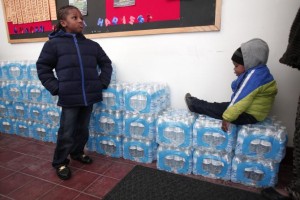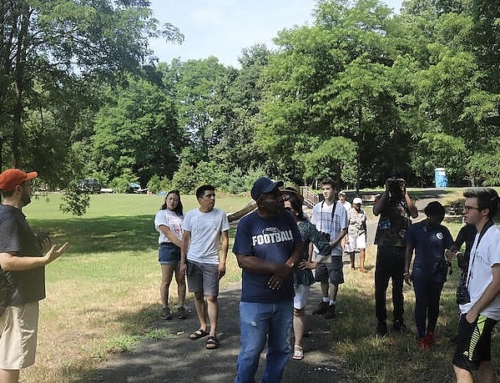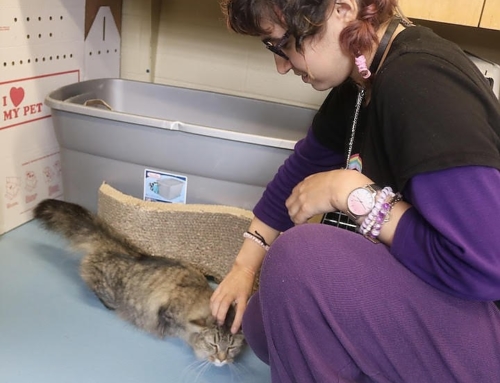
Justin Roberson (left), age 6, and Mychal Adams, age 1, wait on a stack of bottled water at a rally where the Rev. Jesse Jackson was speaking about about the water crisis in Flint, Michigan, Jan. 17, 2016. PHOTO: BILL PUGLIANO/GETTY IMAGES via IBT
NEW HAVEN, Connecticut — Elizer Lee Cruz will occasionally look out at English Station — the shuttered and corroding coal power plant sitting on an eight-acre island in the middle of Mill River — and marvel at its architecture. From Fair Haven, a neighborhood just east of the river comprising largely minority and working-poor people, Cruz and his neighbors can see the tops of four of the facility’s smokestacks that stopped billowing in 1992.
[…] With a recent focus on police violence against communities of color, national social movements have little bandwidth to address environmental injustice, says Kerry Ellington, a black New Haven activist and teacher. Ellington notes:
I think Black Lives Matter has a special role right now and a heavy burden to broaden the narrative of the injustices happening in black communities across America,” Ellington says, noting however that “we have to broaden the idea of what violence looks like in communities of color.
[..] Common Ground High School, located northwest of the city’s residential neighborhoods, encourages its mostly black and Latino students to develop solutions for environmental injustice in their community, according to Joel Tolman, a spokesman for the school.
Marcel Aguirre, an 18-year-old recent graduate of Common Ground, says he wants the larger community to feel as though it has a stake in the well-being of poor blacks and Latinos. Aguirre says remedies for environmental injustice eventually cost everyone, even the rich. Aguirre adds:
One person’s problem is everyone’s problem.
[button url=”http://www.ibtimes.com/beyond-flint-poor-blacks-latinos-endure-oversized-burden-americas-industrial-waste-2277647″]Read the full story in the International Business Times »[/button]






Leave A Comment